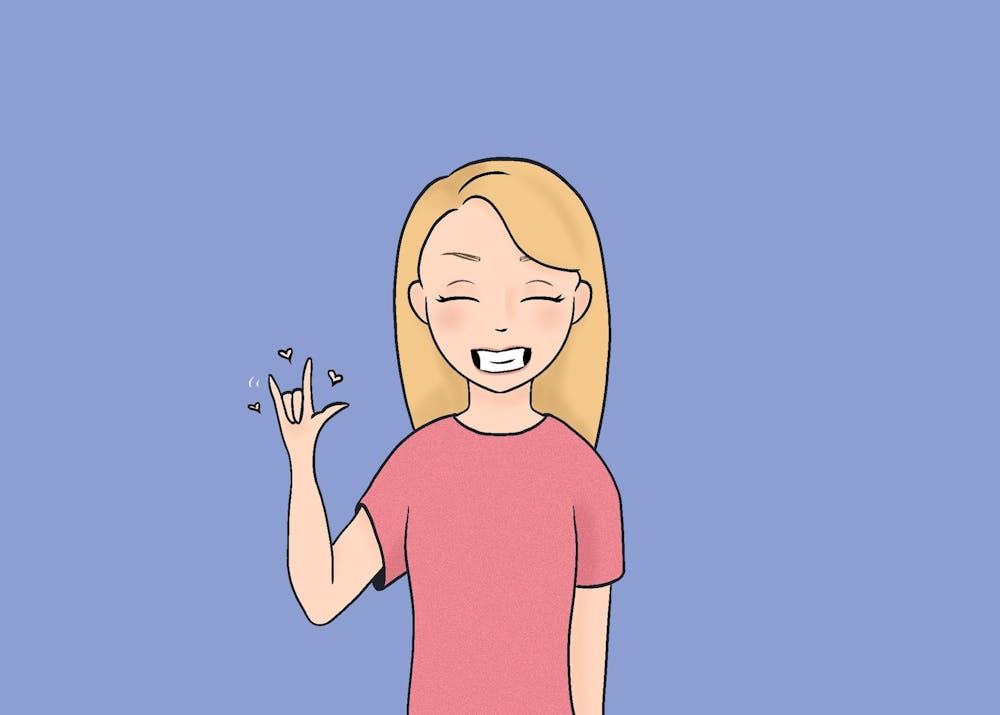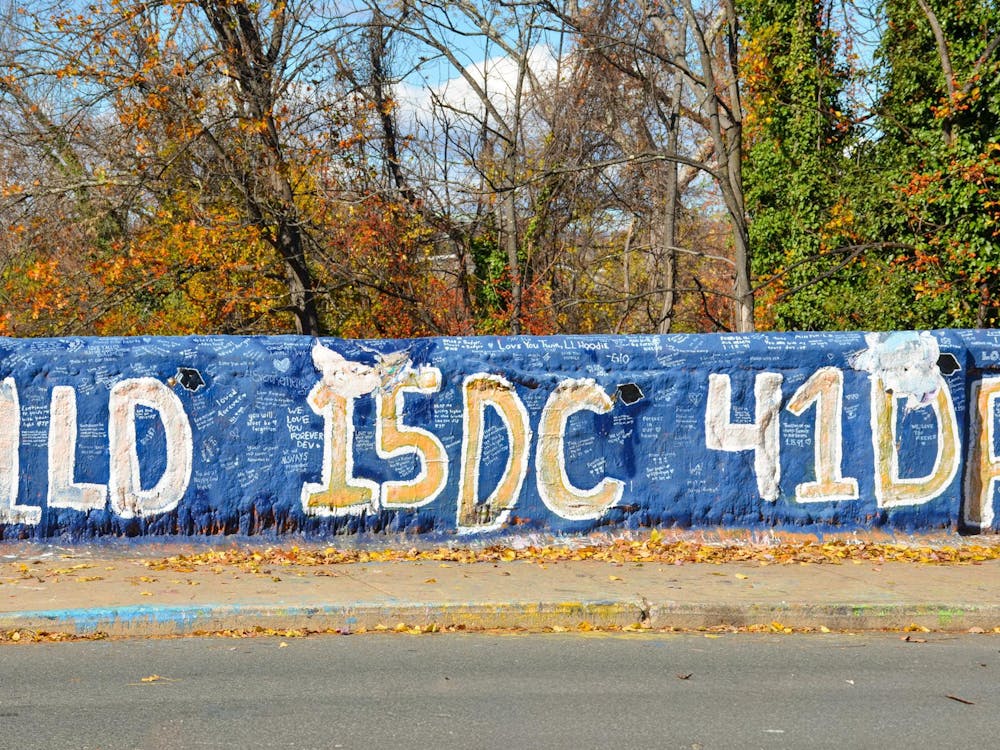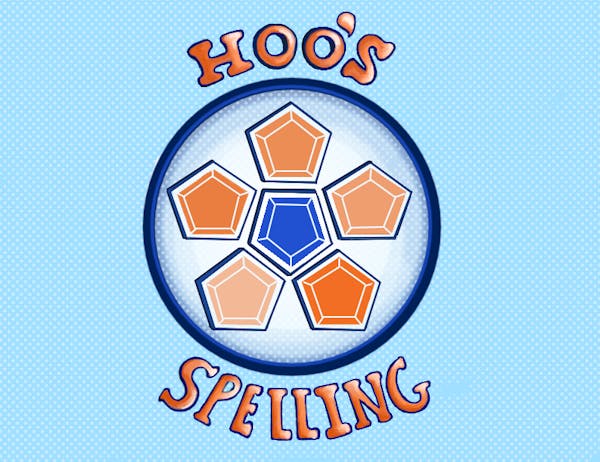When students walk into an American Sign Language class at the University, they do not hear voices. Instead, they gather around in a semi-circle, looking each other in the eye, their hands animated in conversation. This classroom environment mirrors the broader Deaf community — one rooted in connection and shared understanding — and fosters a sense of belonging among University students regardless of hearing ability.
This kind of atmosphere took on special significance this past September during Deaf Awareness Month, a time to celebrate Deaf culture and recognize those who have paved the way for the Deaf community. Throughout this month and beyond, University students and faculty alike have worked to strengthen understanding about deafness and foster inclusion of Deaf individuals, building bridges that transcend sound.
As a student in the ASL program and President of DEAFS, a CIO that elevates Deaf culture, fourth-year College student and hearing individual Lydia Smith emphasized the importance of challenging and correcting common misconceptions about deafness.
“From the deaf people that I have met through the department, they are all very proud of being Deaf and are very outspoken that deafness is not a disability — it’s just a difference,” Smith said.
ASL professor Christopher Krentz, as a hard-of-hearing individual himself, views Deaf Awareness Month as a way to educate the broader community, not just ASL students like Smith, on Deaf culture. Krentz explained that it is a common myth that ASL is a universal language, when in reality, there are more than 100 sign languages in the world. He also said that ASL is not signed English, as many people may believe, and some signs do not have an English translation.
“People sometimes feel surprised to find out [ASL] has a grammar and syntax and rules, too,” Krentz said.
ASL professor Maher Eshgi, who is also a Deaf individual, said it is important to not only spread awareness about deaf communication, but also teach deaf history, learning about past oppression and celebrating role models, from actors to authors, that help bring deafness into mainstream media.
“For this month, it's nice to remember those who provided access and paved the way and really just everything from the language to accessibility and establishing all those norms, and those who had fought for us,” Eshgi said.
Over the last month, many of these conversations have taken place within the ASL program itself, as it is the primary space where students can engage with Deaf culture on Grounds. The program was established in 1996, and starting in 1998, ASL was accepted as a foreign language requirement. More recently, in 2017, the department introduced a minor in American Sign Language & Deaf Culture. Nowadays, around 80 to 120 students take ASL classes each semester, and in the Class of 2026, 14 students plan to graduate with the ASL minor.
Gregory Propp, ASL program director and lecturer, has been a part of the University’s ASL community since the program’s founding. Propp is a CODA, the child of deaf adults. Propp said that the structure of the ASL program, with such intimate classes and strong student-faculty ties, is designed to foster connection and integrate students into the wider Deaf community.
“That kind of cultural knowledge [and] mutual respect [are] as important, if not, in some ways more important than the actual language skills,” Propp said.
Third-year Education student and hearing individual Emma Rudolph, who is pursuing the ASL minor, said that her favorite part of her ASL education has been learning about the diverse upbringings and experiences of Deaf individuals. These conversations have especially come to light this month, she said.
“It's super empowering during Deaf Awareness Month to see everyone's stories and their journey through being a proud deaf individual,” Rudolph said.
Propp said that Deaf awareness should not just be confined to one month out of the year, but rather that spreading awareness should be a continuous effort. He said that ASL students carry their skills into all the spaces they enter as an ally to the Deaf community.
Some students turn this mindset shift into not only a lifestyle, but a career. Propp shared that one former student of his joined the Peace Corps and now teaches ASL at a deaf school in Kenya. Propp said that she recently sent him videos of her students signing a sentence in Kenyan Sign Language, which made Propp emotional, being able to see his student making a difference in the global Deaf community.
“You know, kids halfway across the world are exposed to someone that we kind of had a hand in what she's doing and doing it well, I'm positive,” Propp said.
Despite the department’s efforts to raise awareness about the Deaf community, deaf individuals still experience widespread accessibility issues. Eshgi said the public still generally lacks an understanding of what accommodations would make daily life more inclusive.
At the University, SDAC aims to provide deaf and hard-of-hearing students with accommodations. According to Propp, these range from minor adjustments, like reminding a professor to face the class when speaking, to larger accommodations, including audio systems, interpreters and a T-cell on a hearing aid — which allows a student's hearing aid to focus on what the professor is saying.
Eshgi noted, however, that it is just as important to accommodate deaf and hard-of-hearing individuals outside of the classroom. The students in the ASL program are exposed to the needs of Deaf individuals, which is a great start, but Eshgi emphasized that a greater awareness of deafness is still needed among University faculty and employees.
Fourth-year College student Layla Robinson shared a similar sentiment. She has gotten involved with the ASL department as a Shea House resident, where she lives with other students who also practice ASL. There, she has learned to notice and heed the little ways in which hearing individuals can make life more accessible to deaf individuals.
“Learn all that you can about the Deaf community, and just really be more mindful on a day to day,” Robinson said. “Even when you're doing something as simple as posting a video online … add subtitles.”
Propp said that the ASL program aims to continue growing, and with the recent addition of two new professors from the anthropology department, the department hopes to offer the close-knit ASL classroom experience to even more students in the future. Carrying on the mission of the department, Propps said, has been a meaningful way to celebrate Deaf Awareness Month, uplifting the Deaf community in the classroom and beyond.
“[Students] will make [their] best friends here and create a language community, again, in my eyes, [that] reflects that close, sharing, supportive Deaf community that I grew up in,” Propp said.







